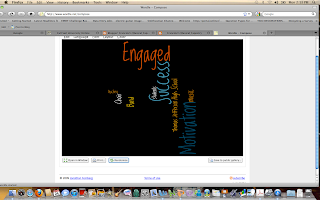I found the ultimate Web 2.0 tool that can make the lives of choral music teachers instructional time more effective, engaging and much easier, particularly during rehearsals. This Wiki tool is called AUDACITY.
AUDACITY is a free software download that can play existing audio files as well as record the voice, an LP or a tape. Recording can be done with a USB turntable, tape deck or USB soundcard. Sounds can be edited and exported to an MP3 or other audio file. You can edit Ogg, Vorbis, MP3, WAV or AIFF sound files as well as cut, copy, splice or mix sounds together and change the speed or pitch of a recording. A screenshot of some of the features is on the left.

You can also burn a music file that you have recorded to a CD.
This last option would be a great way to convert all of those old LP’s and tapes that we have laying around in the attic or garage into digital recordings. If you do not have an internal microphone, then you will need to purchase an external microphone (USB preferably) in order to record anything using this wiki tool to your laptop or computer. The screen shots of the tutorials are available and user friendly.
I am so excited to be using this Wiki tool! I heard about AUDACITY from a colleague from another school district who uses it to provide individualized vocal instruction for his choral learners. He loves it!!
Since our MacBook Pro laptops come with an internal microphone, I was able to fire this tool up immediately. There is a “help manual,”that comes with the download. There are also tutorials; see screenshots above and to the right!
I viewed the FAQs so that I could get answers to the questions I had. There are numerous FAQ's. This is just an excerpt of the FAQ below:
As soon as I clicked the record button I was able to record my voice. So totally awesome!!!! I can export recorded tracks as a separate file to my desktop and then attach the file to an email and send it to my learners email accounts. How awesome is that? I tried it out and sent the file to a colleague. It works and it sounds crystal clear once delivered! It is better than a digital recorder and it takes less time to navigate as well, in my opinion!
There is a license agreement that states that you can distribute, copy, modify and resell to others as long as you follow the guidelines of the GNU General Public License . You may use it for any personal, commercial or educational purpose, including installing it on as many different computers as you wish.
Students can listen to their vocal parts, sing with the tracks and/or my personalized instructions in the privacy of their homes as well as learn their vocal parts prior to coming to school. This can also be use as an assessment tool to review choral literature learned as well as for testing purposes. I can also record the full accompaniment so that learners can practice their vocal with piano or other instrumentation. Students will no longer have an excuse for not being able to learn the music for my class.

On the right is a screen shot of the email I sent to my colleague to test out Audacity. I have highlighted the file with a square in the bottom left hand corner of the email that shows that the audio file is attached. Below I have captured the various components of this program by showing you the windows that were included in the download.
In addition, I plan to use this tool in conjunction with my CBR. For the CBR I plan to survey my target audience using survey monkey from the web, however, with this tool, I can record additional open-ended questions that would allow my audiences to be able to provide more in-depth answers to my inquiries. I can send an email to the teachers and admin and they can answer the questions within a certain proposed timeframe and email their responses back to me.
This would also be an excellent to for teachers of foreign language. They could record the pronunciation of vocabulary words for students to practice at home. Also stories can be narrated and music can be recorded in the background. There are so many ways AUDACITY can be use to motivate and engage today's learners.

































